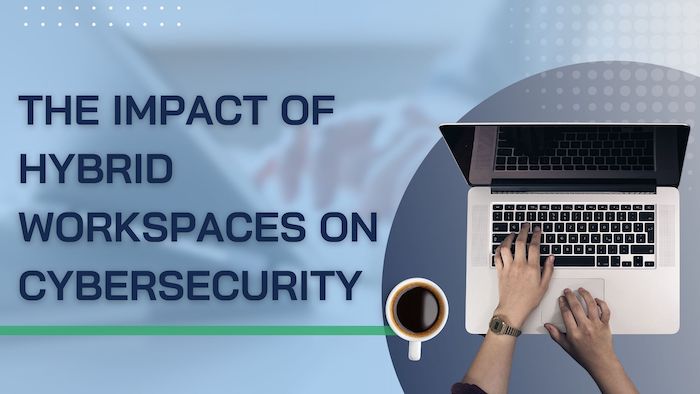In today’s rapidly evolving business landscape, the concept of hybrid workspaces has ushered in a new era of flexibility and productivity. However, with this transformation comes a host of cybersecurity challenges that require careful consideration and strategic solutions. Keep reading as we dive deep into the impact of hybrid workspaces on cybersecurity and discuss actionable strategies to effectively mitigate the associated risks.
Hybrid workspaces, characterized by a combination of remote and in-office work, have extended the battlefield for cyber threats. With employees accessing critical networks and data from a variety of locations and devices, the attack surface has expanded significantly. This has given malicious actors more opportunities to exploit vulnerabilities and gain unauthorized access. To counteract this, organizations must proactively implement security measures.
One crucial aspect of maintaining cybersecurity in hybrid workspaces is the enforcement of robust security controls. Regular updates and patches for operating systems and third-party software play a pivotal role in vulnerability management. Additionally, incorporating multi factor authentication (MFA) adds an extra layer of protection by requiring multiple forms of verification. A strong password policy further bolsters authentication mechanisms, making it harder for attackers to compromise accounts.
A notable trend in response to hybrid workspaces is the rise of Conditional Access policies. These policies enable contextual access control based on factors like user identity, device attributes, and geographical location. By implementing stringent access controls, organizations can thwart unauthorized access attempts and enhance their overall security posture.
The concept of Zero Trust security has gained prominence as a potent strategy for securing hybrid workspaces. Operating on the principle of “never trust, always verify,” this approach emphasizes continuous verification of user identities, device integrity, and application authenticity. This effectively minimizes the potential for lateral movement within the network, confining access only to rigorously authenticated resources.
As hybrid workspaces redefine the boundaries of traditional networks, cybersecurity strategies must adapt accordingly. The Zero Trust approach goes beyond conventional perimeter-centric models and extends security measures to encompass data protection, identity management, and application security. This comprehensive approach ensures holistic protection across all components of the IT ecosystem.
Implementing Zero Trust effectively requires a tailored approach. Organizations must customize their strategies to align with their unique requirements. This involves weaving together interconnected control pillars, including identities, devices, applications, data, infrastructure, and networks. Automation and security orchestration seamlessly integrate these pillars, creating a cohesive defense mechanism that can withstand evolving cyber threats.
While the benefits of hybrid workspaces are evident, they come hand in hand with cybersecurity risks that demand attention:
Cloud Security Risks: The migration of data to the cloud necessitates robust cloud security practices. Encryption, access controls, and data loss prevention mechanisms are essential to safeguard sensitive information.
Employee Training: Lack of security awareness can render even the most advanced cybersecurity measures ineffective. Regular training programs and simulated phishing exercises enhance employees’ ability to recognize and thwart social engineering and phishing attacks.
Endpoint Vulnerability: With an expanded attack surface, comprehensive endpoint protection is critical. Endpoint security solutions, coupled with continuous monitoring, mitigate the risks associated with device vulnerabilities.
Data Protection: Robust data protection strategies, including encryption, access controls, and data classification, are paramount in safeguarding sensitive information from unauthorized access and breaches.
Authentication Measures: Strong authentication methods, including MFA and biometric authentication, create formidable barriers against unauthorized access attempts, enhancing the overall security stance.
As a whole, the advent of hybrid workspaces introduces a new set of challenges for cybersecurity. By embracing strategies like Zero Trust, tailoring implementation, and prioritizing security controls, organizations can effectively mitigate these risks while working from hybrid workspace. Safeguarding hybrid workspaces requires a proactive, comprehensive approach that secures data, identities, and applications, regardless of their physical location. As we continue to navigate this evolving landscape, a robust cybersecurity posture will be the cornerstone of a resilient and secure future.

